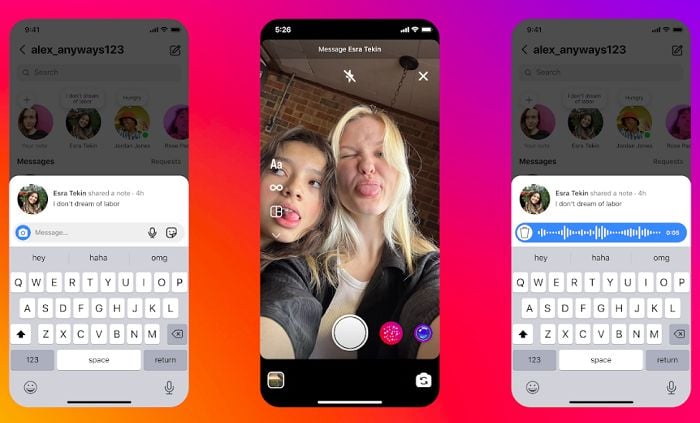While social shopping hasn’t taken off the way the platforms would like, they’re still pushing in-stream shopping tools, in the hopes of building new revenue streams and use cases.
TikTok, in particular, keeps trying to make in-app shopping happen, as it seeks to replicate the success that it saw with in-stream shopping on Douyin, the Chinese version of the app. In 2023, Douyin generated $375 billion in gross merchandise sales, which is a 50% increase on the previous year. TikTok, comparatively, generated around $4 billion via in-app spending in 2023, and that primarily came from TikTok Coins for creator donations.
For whatever reason, Western consumers just haven’t warmed to social shopping in the same way that Asian markets have. Yet, social media spending is increasing over time, at a steady rate. And given its adoption in China, the view is that Western regions will catch on at some stage, as more people spend more money in-stream, and younger users become increasingly accustomed to tapping “Buy” buttons, as opposed to being diverted to another site.
Which brings us to this new research report from eMarketer, which looks at social shopping adoption, and what inspires social shoppers to make a purchase in-stream.
To clarify, “social shoppers” in this context are social media users who have purchased at least one thing via social apps over the past year.
And their main platform of choice? You guessed it:


Facebook is by far the leading platform for driving shopping behavior, followed by TikTok and Instagram, both at around half the rate of response.
Facebook does have some advantages in this respect. For one, the platform has way more users than any other social app, so scale alone enhances its opportunity. The question here also doesn’t specify where these people made a purchase. So Facebook Marketplace is also in play, and it could be that a lot of these shopping actions came via secondhand listings, as opposed to via brand promotions.
But right now, based on this data at least, Facebook is the social app where users are more likely to make a purchase.
But then again…


As you can see in this chart, in terms of shopping frequency, people who regularly use Snapchat and Reddit are more likely to make regular purchases in each respective app.
So again, while Facebook has a lot more users than either app, of the people who are engaged in these communities, their purchase likelihood is higher, and more regularly guided by in-app promotions and posts.
That could suggest that these platforms are better at highlighting relevant products to users, or that they trust the recommendations and advice they get on these apps more. But either way, both charts provide some interesting insight into the social shopping shift, and where people are engaging with in-stream shopping pushes.
Among other notes, eMarketer says that short videos are now the most influential type of social commerce content, while most shoppers are only spending minimal amounts via social apps.
Neither of those notes are a big surprise, but it does highlight the value of short-form content, while also pointing to the fact that trust likely remains a factor for social shoppers, which could be another impediment to adoption.
So how do the platforms make social shopping happen?
Well, security is a concern, but the various safety measures in place on social apps are largely the same as those available on shopping-specific platforms. It’s just that social apps don’t have the same reputation, while data privacy concerns also weigh heavy on people who may be considering entering their credit card details.
Overall, it seems like Western shoppers are more inclined to use shopping specialist platforms, like Amazon, as opposed to buying products within other apps. The fact that both platforms are focused entirely on delivering a great shopping experience, and both have good reputations on this front, are key considerations, and could continue to make it hard for social apps to gain traction with their own commerce listings.
But then again, convenience is, historically, king, and over time, more younger consumers are becoming more comfortable with seeing a social promo and making a purchase, then and there.
Will that eventually become the norm? It still seems likely that it will, but it could still be some time yet before we see Chinese-like adoption of social shopping.
You can read the full report from eMarketer here, which could provide you with some valuable insight to focus your holiday promotions.













